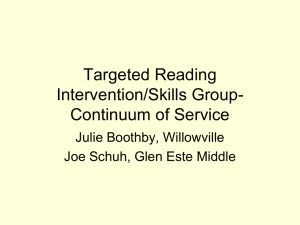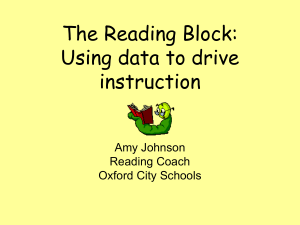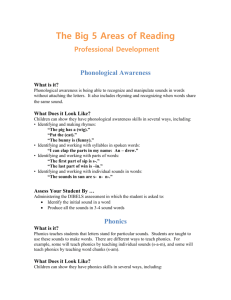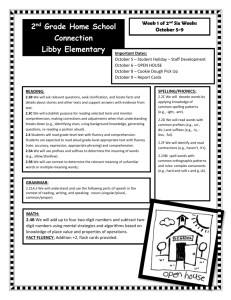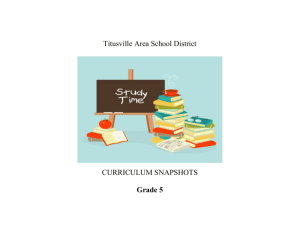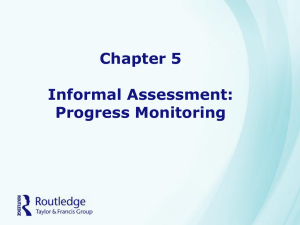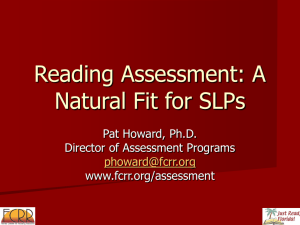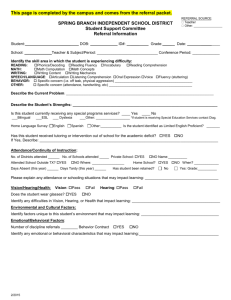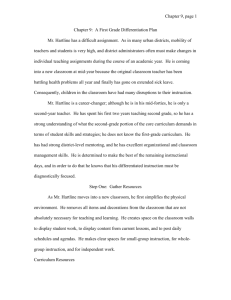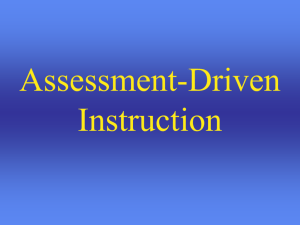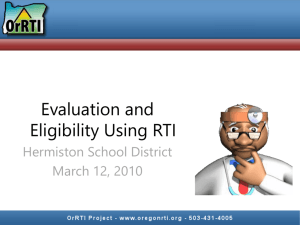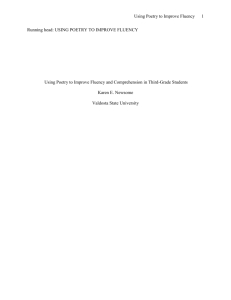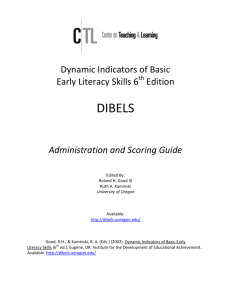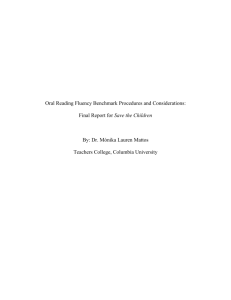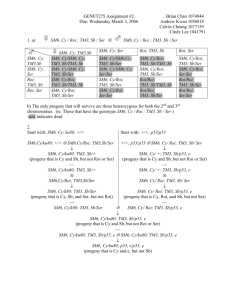2014 3-6 Decision Tree p 1 11 2014
advertisement
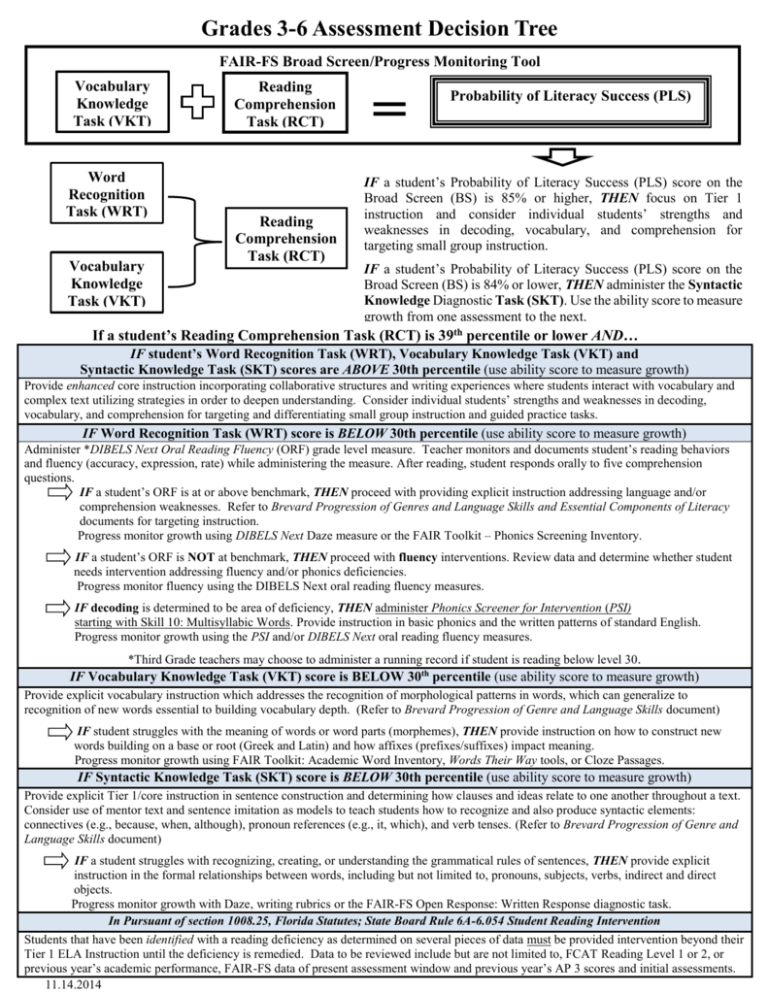
Grades 3-6 Assessment Decision Tree FAIR-FS Broad Screen/Progress Monitoring Tool Vocabulary Knowledge Task (VKT) Word Recognition Task (WRT) Vocabulary Knowledge Task (VKT) Reading Comprehension Task (RCT) Reading Comprehension Task (RCT) = Probability of Literacy Success (PLS) IF a student’s Probability of Literacy Success (PLS) score on the Broad Screen (BS) is 85% or higher, THEN focus on Tier 1 instruction and consider individual students’ strengths and weaknesses in decoding, vocabulary, and comprehension for targeting small group instruction. IF a student’s Probability of Literacy Success (PLS) score on the Broad Screen (BS) is 84% or lower, THEN administer the Syntactic Knowledge Diagnostic Task (SKT). Use the ability score to measure growth from one assessment to the next. If a student’s Reading Comprehension Task (RCT) is 39th percentile or lower AND… IF student’s Word Recognition Task (WRT), Vocabulary Knowledge Task (VKT) and Syntactic Knowledge Task (SKT) scores are ABOVE 30th percentile (use ability score to measure growth) Provide enhanced core instruction incorporating collaborative structures and writing experiences where students interact with vocabulary and complex text utilizing strategies in order to deepen understanding. Consider individual students’ strengths and weaknesses in decoding, vocabulary, and comprehension for targeting and differentiating small group instruction and guided practice tasks. IF Word Recognition Task (WRT) score is BELOW 30th percentile (use ability score to measure growth) Administer *DIBELS Next Oral Reading Fluency (ORF) grade level measure. Teacher monitors and documents student’s reading behaviors and fluency (accuracy, expression, rate) while administering the measure. After reading, student responds orally to five comprehension questions. IF a student’s ORF is at or above benchmark, THEN proceed with providing explicit instruction addressing language and/or comprehension weaknesses. Refer to Brevard Progression of Genres and Language Skills and Essential Components of Literacy documents for targeting instruction. Progress monitor growth using DIBELS Next Daze measure or the FAIR Toolkit – Phonics Screening Inventory. IF a student’s ORF is NOT at benchmark, THEN proceed with fluency interventions. Review data and determine whether student needs intervention addressing fluency and/or phonics deficiencies. Progress monitor fluency using the DIBELS Next oral reading fluency measures. IF decoding is determined to be area of deficiency, THEN administer Phonics Screener for Intervention (PSI) starting with Skill 10: Multisyllabic Words. Provide instruction in basic phonics and the written patterns of standard English. Progress monitor growth using the PSI and/or DIBELS Next oral reading fluency measures. *Third Grade teachers may choose to administer a running record if student is reading below level 30. IF Vocabulary Knowledge Task (VKT) score is BELOW 30th percentile (use ability score to measure growth) Provide explicit vocabulary instruction which addresses the recognition of morphological patterns in words, which can generalize to recognition of new words essential to building vocabulary depth. (Refer to Brevard Progression of Genre and Language Skills document) IF student struggles with the meaning of words or word parts (morphemes), THEN provide instruction on how to construct new words building on a base or root (Greek and Latin) and how affixes (prefixes/suffixes) impact meaning. Progress monitor growth using FAIR Toolkit: Academic Word Inventory, Words Their Way tools, or Cloze Passages. IF Syntactic Knowledge Task (SKT) score is BELOW 30th percentile (use ability score to measure growth) Provide explicit Tier 1/core instruction in sentence construction and determining how clauses and ideas relate to one another throughout a text. Consider use of mentor text and sentence imitation as models to teach students how to recognize and also produce syntactic elements: connectives (e.g., because, when, although), pronoun references (e.g., it, which), and verb tenses. (Refer to Brevard Progression of Genre and Language Skills document) IF a student struggles with recognizing, creating, or understanding the grammatical rules of sentences, THEN provide explicit instruction in the formal relationships between words, including but not limited to, pronouns, subjects, verbs, indirect and direct objects. Progress monitor growth with Daze, writing rubrics or the FAIR-FS Open Response: Written Response diagnostic task. In Pursuant of section 1008.25, Florida Statutes; State Board Rule 6A-6.054 Student Reading Intervention Students that have been identified with a reading deficiency as determined on several pieces of data must be provided intervention beyond their Tier 1 ELA Instruction until the deficiency is remedied. Data to be reviewed include but are not limited to, FCAT Reading Level 1 or 2, or previous year’s academic performance, FAIR-FS data of present assessment window and previous year’s AP 3 scores and initial assessments. 11.14.2014

